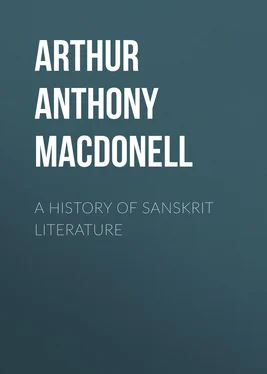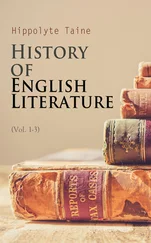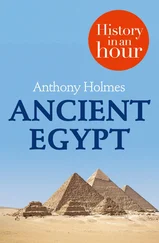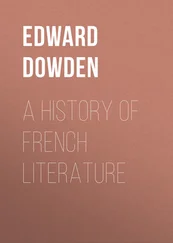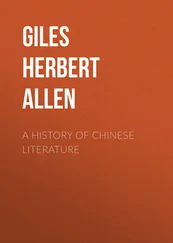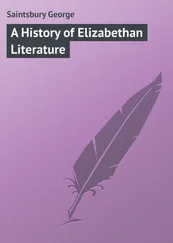Arthur Anthony MacDonell - A History of Sanskrit Literature
Здесь есть возможность читать онлайн «Arthur Anthony MacDonell - A History of Sanskrit Literature» — ознакомительный отрывок электронной книги совершенно бесплатно, а после прочтения отрывка купить полную версию. В некоторых случаях можно слушать аудио, скачать через торрент в формате fb2 и присутствует краткое содержание. Жанр: foreign_prose, foreign_antique, на английском языке. Описание произведения, (предисловие) а так же отзывы посетителей доступны на портале библиотеки ЛибКат.
- Название:A History of Sanskrit Literature
- Автор:
- Жанр:
- Год:неизвестен
- ISBN:нет данных
- Рейтинг книги:5 / 5. Голосов: 1
-
Избранное:Добавить в избранное
- Отзывы:
-
Ваша оценка:
- 100
- 1
- 2
- 3
- 4
- 5
A History of Sanskrit Literature: краткое содержание, описание и аннотация
Предлагаем к чтению аннотацию, описание, краткое содержание или предисловие (зависит от того, что написал сам автор книги «A History of Sanskrit Literature»). Если вы не нашли необходимую информацию о книге — напишите в комментариях, мы постараемся отыскать её.
A History of Sanskrit Literature — читать онлайн ознакомительный отрывок
Ниже представлен текст книги, разбитый по страницам. Система сохранения места последней прочитанной страницы, позволяет с удобством читать онлайн бесплатно книгу «A History of Sanskrit Literature», без необходимости каждый раз заново искать на чём Вы остановились. Поставьте закладку, и сможете в любой момент перейти на страницу, на которой закончили чтение.
Интервал:
Закладка:
It is, however, highly probable that Yāska, with all the appliances at his command, was able to ascertain the sense of many words which scholars who, like Sāyaṇa, lived nearly two thousand years later, had no means of discovering. Nevertheless Sāyaṇa is sometimes found to depart from Yāska. Thus we arrive at the dilemma that either the old interpreter is wrong or the later one does not follow the tradition. There are also many instances in which Sāyaṇa, independently of Yāska, gives a variety of inconsistent explanations of a word, both in interpreting a single passage or in commenting on different passages. Thus çārada , “autumnal,” he explains in one place as “fortified for a year,” in another as “new or fortified for a year,” and in a third as “belonging to a demon called Çarad.” One of the defects of Sāyaṇa is, in fact, that he limits his view in most cases to the single verse he has before him. A detailed examination of his explanations, as well as those of Yāska, has shown that there is in the Rigveda a large number of the most difficult words, about the proper sense of which neither scholar had any certain information from either tradition or etymology. We are therefore justified in saying about them that there is in the hymns no unusual or difficult word or obscure text in regard to which the authority of the commentators should be received as final, unless it is supported by probability, by the context, or by parallel passages. Thus no translation of the Rigveda based exclusively on Sāyaṇa’s commentary can possibly be satisfactory. It would, in fact, be as unreasonable to take him for our sole guide as to make our understanding of the Hebrew books of the Old Testament dependent on the Talmud and the Rabbis. It must, indeed, be admitted that from a large proportion of Sāyaṇa’s interpretations most material help can be derived, and that he has been of the greatest service in facilitating and accelerating the comprehension of the Veda. But there is little information of value to be derived from him, that, with our knowledge of later Sanskrit, with the other remains of ancient Indian literature, and with our various philological appliances, we might not sooner or later have found out for ourselves.
Roth, then, rejected the commentators as our chief guides in interpreting the Rigveda , which, as the earliest literary monument of the Indian, and indeed of the Aryan race, stands quite by itself, high up on an isolated peak of remote antiquity. As regards its more peculiar and difficult portions, it must therefore be interpreted mainly through itself; or, to apply in another sense the words of an Indian commentator, it must shine by its own light and be self-demonstrating. Roth further expressed the view that a qualified European is better able to arrive at the true meaning of the Rigveda than a Brahman interpreter. The judgment of the former is unfettered by theological bias; he possesses the historical faculty, and he has also a far wider intellectual horizon, equipped as he is with all the resources of scientific scholarship. Roth therefore set himself to compare carefully all passages parallel in form and matter, with due regard to considerations of context, grammar, and etymology, while consulting, though, perhaps, with insufficient attention, the traditional interpretations. He thus subjected the Rigveda to a historical treatment within the range of Sanskrit itself. He further called in the assistance rendered from without by the comparative method, utilising the help afforded not only by the Avesta , which is so closely allied to the Rigveda in language and matter, but also by the results of comparative philology, resources unknown to the traditional scholar.
By thus ascertaining the meaning of single words, the foundations of the scientific interpretation of the Vedas were laid in the great Sanskrit Dictionary, in seven volumes, published by Roth in collaboration with Böhtlingk between 1852 and 1875. Roth’s method is now accepted by every scientific student of the Veda. Native tradition is, however, being more fully exploited than was done by Roth himself, for it is now more clearly recognised that no aid to be derived from extant Indian scholarship ought to be neglected. Under the guidance of such principles the progress already made in solving many important problems presented by Vedic literature has been surprising, when we consider the shortness of the time and the fewness of the labourers, of whom only two or three have been natives of this country. As a general result, the historical sense has succeeded in grasping the spirit of Indian antiquity, long obscured by native misinterpretation. Much, of course, still remains to be done by future generations of scholars, especially in detailed and minute investigation. This could not be otherwise when we remember that Vedic research is only the product of the last fifty years, and that, notwithstanding the labours of very numerous Hebrew scholars during several centuries, there are, in the Psalms and the Prophetic Books of the Old Testament, still many passages which remain obscure and disputed. There can be no doubt that many problems at present insoluble will in the end be solved by that modern scholarship which has already deciphered the cuneiform writings of Persia as well as the rock inscriptions of India, and has discovered the languages which lay hidden under these mysterious characters.
Having thus arrived at the threshold of the world of Vedic thought, we may now enter through the portals opened by the golden key of scholarship. By far the greater part of the poetry of the Rigveda consists of religious lyrics, only the tenth book containing some secular poems. Its hymns are mainly addressed to the various gods of the Vedic pantheon, praising their mighty deeds, their greatness, and their beneficence, or beseeching them for wealth in cattle, numerous offspring, prosperity, long life, and victory. The Rigveda is not a collection of primitive popular poetry, as it was apt to be described at an earlier period of Sanskrit studies. It is rather a body of skilfully composed hymns, produced by a sacerdotal class and meant to accompany the Soma oblation and the fire sacrifice of melted butter, which were offered according to a ritual by no means so simple as was at one time supposed, though undoubtedly much simpler than the elaborate system of the Brāhmaṇa period. Its poetry is consequently marred by frequent references to the sacrifice, especially when the two great ritual deities, Agni and Soma, are the objects of praise. At the same time it is on the whole much more natural than might under these conditions be expected. For the gods who are invoked are nearly all personifications of the phenomena of Nature, and thus give occasion for the employment of much beautiful and even noble imagery. The diction of the hymns is, generally speaking, simple and unaffected. Compound words are sparingly used, and are limited to two members, in marked contrast with the frequency and length of compounds in classical Sanskrit. The thought, too, is usually artless and direct, except in the hymns to the ritual deities, where it becomes involved in conceit and mystical obscurity. The very limited nature of the theme, in these cases, must have forced the minds of the priestly singers to strive after variety by giving utterance to the same idea in enigmatical phraseology.
Here, then, we already find the beginnings of that fondness for subtlety and difficult modes of expression which is so prevalent in the later literature, and which is betrayed even in the earlier period by the saying in one of the Brāhmanas that the gods love the recondite. In some hymns, too, there appears that tendency to play with words which was carried to inordinate lengths in late Sanskrit poems and romances. The hymns of the Rigveda , of course, vary much in literary merit, as is naturally to be expected in the productions of many poets extending over some centuries. Many display a high order of poetical excellence, while others consist of commonplace and mechanical verse. The degree of skill in composition is on the average remarkably high, especially when we consider that here we have by far the oldest poetry of the Aryan race. The art which these early seers feel is needed to produce a hymn acceptable to the gods is often alluded to, generally in the closing stanza. The poet usually compares his work to a car wrought and put together by a deft craftsman. One Rishi also likens his prayers to fair and well-woven garments; another speaks of having adorned his song of praise like a bride for her lover. Poets laud the gods according to knowledge and ability (vi. 21, 6), and give utterance to the emotions of their hearts (x. 39, 15). Various individual gods are, it is true, in a general way said to have granted seers the gift of song, but of the later doctrine of revelation the Rigvedic poets know nothing.
Читать дальшеИнтервал:
Закладка:
Похожие книги на «A History of Sanskrit Literature»
Представляем Вашему вниманию похожие книги на «A History of Sanskrit Literature» списком для выбора. Мы отобрали схожую по названию и смыслу литературу в надежде предоставить читателям больше вариантов отыскать новые, интересные, ещё непрочитанные произведения.
Обсуждение, отзывы о книге «A History of Sanskrit Literature» и просто собственные мнения читателей. Оставьте ваши комментарии, напишите, что Вы думаете о произведении, его смысле или главных героях. Укажите что конкретно понравилось, а что нет, и почему Вы так считаете.
